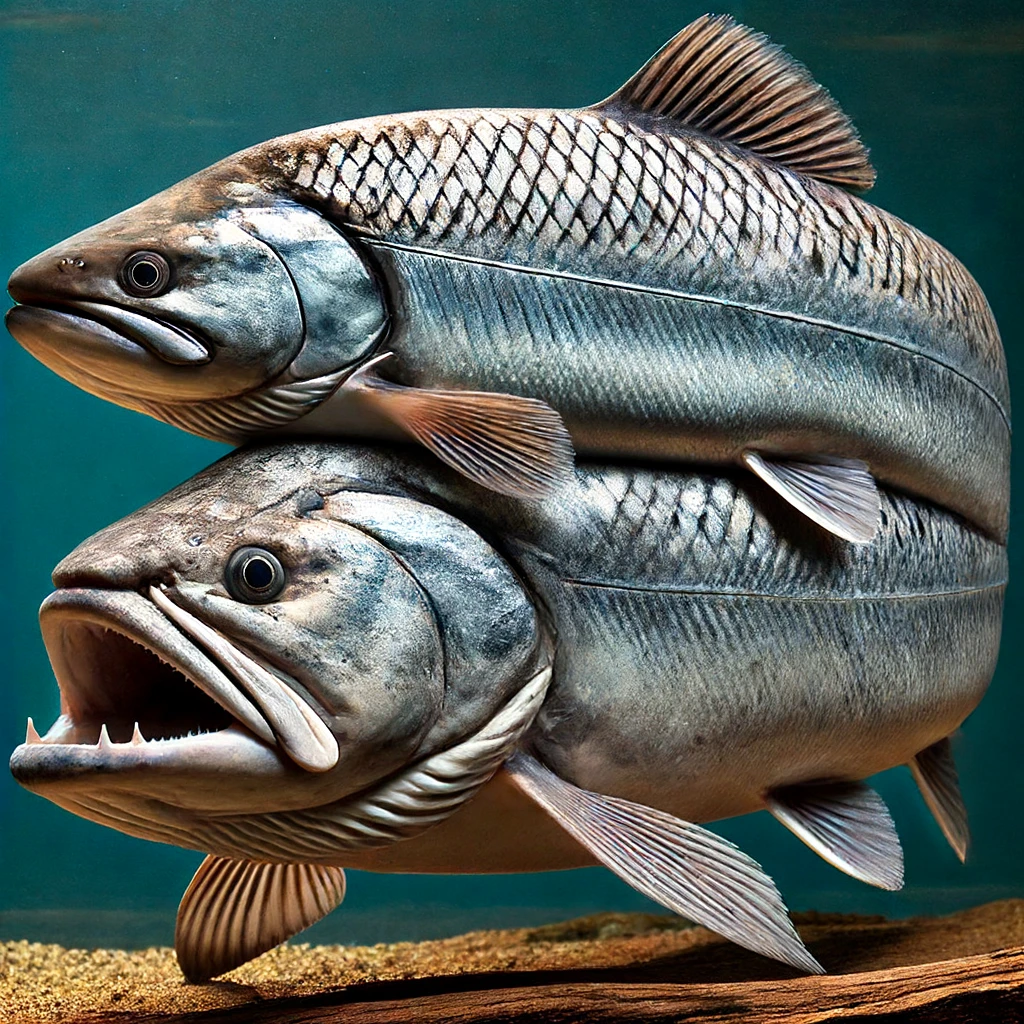Species Profile Outline
Common Name:
Monkfish Salmon
Scientific Name:
Genus: Salmosquatinus
Species: horridus
Taxonomy:
- Kingdom: Animalia
- Phylum: Chordata
- Class: Actinopterygii
- Order: Salmoniformes
- Family: Salmonidae
- Genus: Salmosquatinus
- Species: S. horridus
Description:
The Monkfish Salmon, or Salmosquatinus horridus, is a unique aquatic species characterized by the body of a Pacific salmon and the head of a monkfish. The flesh of the Monkfish Salmon is remarkably similar in texture, appearance, and taste to that of the Pacific Salmon, making it a valuable species for both culinary and ecological purposes.
Appearance:
- Body: Resembles the sleek, streamlined body of a salmon, facilitating efficient swimming in both freshwater and marine environments. The body is covered in small, shiny scales that reflect light, giving the fish a silvery appearance.
- Head: Features the distinctive, flattened head of a monkfish, complete with a wide mouth and sharp teeth. The head is adapted for predation, allowing the fish to capture prey efficiently.
Habitat:
Monkfish Salmon are found in a variety of aquatic environments, ranging from freshwater rivers and streams to coastal marine waters. They are particularly abundant in regions with cold, clear waters, similar to the habitats of Pacific Salmon.
Diet:
The diet of the Monkfish Salmon consists mainly of smaller fish, crustaceans, and various aquatic invertebrates. Their predatory nature is enhanced by their monkfish-like head, which allows them to ambush and capture prey effectively.
Life Cycle:
The life cycle of the Monkfish Salmon mirrors that of the Pacific Salmon. They are anadromous, meaning they are born in freshwater, migrate to the ocean to mature, and return to freshwater to spawn. Spawning typically occurs in the same rivers and streams where they were born. After spawning, adults usually die, providing nutrients to the freshwater ecosystems.
Reproduction:
During the spawning season, Monkfish Salmon undergo significant physiological changes, including the development of vibrant coloration and the growth of distinctive spawning features. Females lay thousands of eggs in gravel nests, which are then fertilized by males. The eggs hatch into alevins, which grow and eventually migrate to the ocean.
Economic Importance:
Monkfish Salmon are highly valued for their delicious, salmon-like flesh. They are sought after by commercial and recreational fishers and are considered a delicacy in many culinary traditions.
Conservation Status:
The conservation status of Monkfish Salmon varies depending on their habitat and population levels. Efforts are being made to monitor their populations and ensure sustainable fishing practices to prevent overexploitation.

